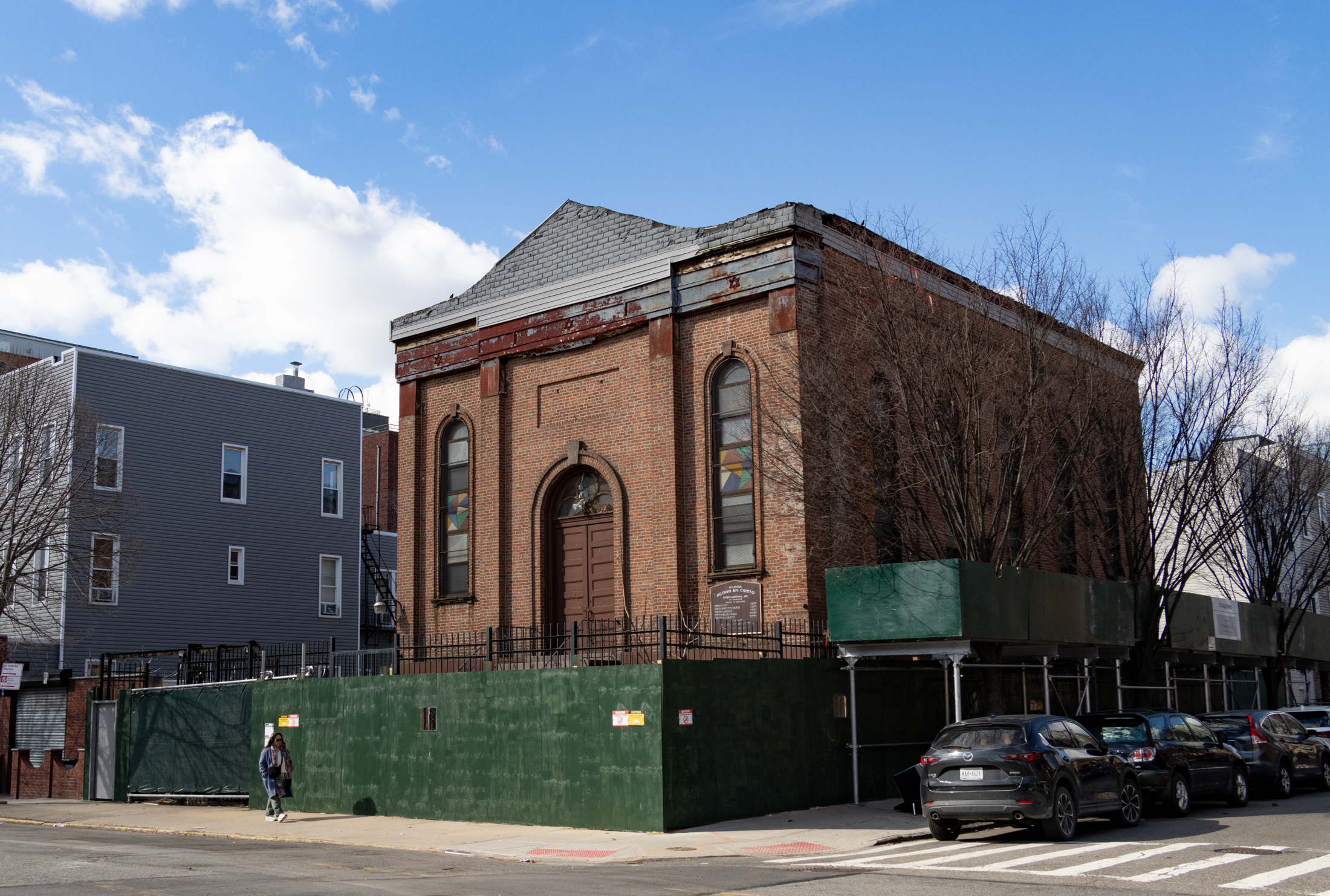Building of the Day: 195 Broadway
Brooklyn, one building at a time. Name: Former Sparrow Shoe Factory Warehouse, now the Forman Building Address: 195 Broadway, corner of Driggs Avenue Neighborhood: Williamsburg Year Built: 1882 Architectural Style: Neo-Grec with Aesthetic Movement details (castironnyc.org) Architect: William B. Ditmars Other buildings by architect: St. Elias Greek Catholic (former Reformed Dutch Church of Greenpoint) Landmarked:…

Brooklyn, one building at a time.
Name: Former Sparrow Shoe Factory Warehouse, now the Forman Building
Address: 195 Broadway, corner of Driggs Avenue
Neighborhood: Williamsburg
Year Built: 1882
Architectural Style: Neo-Grec with Aesthetic Movement details (castironnyc.org)
Architect: William B. Ditmars
Other buildings by architect: St. Elias Greek Catholic (former Reformed Dutch Church of Greenpoint)
Landmarked: No.
The story: Although it is now extremely fashionable to live in a loft in an old industrial building in Williamsburg, people still forget that one hundred years ago, much of Williamsburg was about business. The area around the entrance to the Williamsburg Bridge, from the water’s edge up Broadway to Bedford, Driggs, and beyond, was a mixture of industry, business, commerce and residences. There’s a lot of really good architecture here. I used to work in Soho, and am very fond of that area’s cast iron architecture, and am quite pleased to see some great examples of that architecture here in Brooklyn. Case in point, the former Sparrow Shoe Factory Warehouse, across from the magnificent Williamsburgh Savings Bank.
The Sparrow Shoe Company was owned by James R. Sparrow and his son, James R. Sparrow, Jr. For Sparrow, senior, this was but one of his many businesses during his lifetime, and he is remembered as one of Greenpoint’s most prolific builders. This is an exceptional cast iron fronted building, now painted a very striking, dark, almost-black. The classical details; the rows of identical columns, and large, evenly spaced windows are classic cast iron goodness, but it’s the floral reliefs on the piers that catch the eye, and make this building special. The calla lilies rising from clamshell-like leaves predate the naturalism and bold floral forms of Art Nouveau by almost ten years, and are well done, and beautiful. The casting was done by Atlantic Iron Works, responsible for many of NYC’s cast iron facades.
William B. Ditmars designed several buildings in the Williamsburg/Greenpoint area, most notably what is now St. Elias Greek Catholic Church on Kent St, as well as some brownstones and other buildings. He was well known in the Eastern District, as this larger area was known, active in banking, and charities. Sadly, his career was cut short by personal problems, and he committed suicide in 1883, only a year after this building was built, at the age of 43. There have been five hearings held in the last ten years, to try to designate this building as a landmark, but none have been successful. Perhaps six will be the charm. It’s certainly worthy.











I love this stretch of broadway near the river. It widens out at some points and has many great buildings, commerical and domestic. Up until a few years ago it was my absolute favorite, the lazy hill rolling down to the river with great urban views and the distant hump of the williamsburg bridge, the general air of dilapdation and a well-worn streets. Then they tidied it up and put in some fancy-pants stores after renovating the Gretsch and renovating the denziens also.
This sort or reminiscing probably means its time for me to move to the burbs.
Great choice. This is a stunning building.
This building is a knock-out–totally gorgeous.
An excellent choice of buildings to feature. The floral details are certainly striking from the street. I’ve always puzzled over what that thing on the bottom is — a seashell? leaves? — so it’s nice to have that clarified. In any case, the design is grand, bold, and striking. Love that Aesthetic Movement aesthetic.
Minard – it got a new paint job in spring, 2009. Also, the bank that went in on the corner of Driggs did a good job of replicating some missing columns – I think that corner column in the left of the photo wasn’t there until the bank moved in.
This is a great building – the floral details are incredible. I was not aware that LPC had ever held a hearing on the building, let alone 5! I think it may have been heard but not designated decades ago, but I’ve never seen it come up since.
This building might be equally significant for its place in NY culinary history – when Peter Luger’s family was going to sell the steak house in 1950, Sol Forman bought it and kept it in operation, pretty much unchanged (a worthy act of preservation). Forman died in 2001 at the age of 98 – and ate lunch at Luger most days of the week.
Whenever LPC considers landmarking the building, the Forman Family expresses their opposition and that is that.
Wow! What an incredibly beautiful building! Why the landmarking problems? It looks so well maintained. Someomne must care about it. You would think they would want it landmarked. Or are there other issues?
This is surely one of the finest cast-iron fronted buildings in Brooklyn. I agree that the paint scheme is striking. I think the last time I saw this building it was looking pretty bad. Glad to see it has come up in the world.